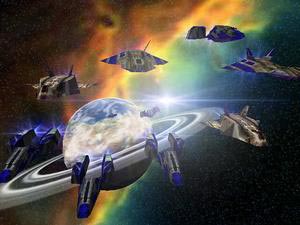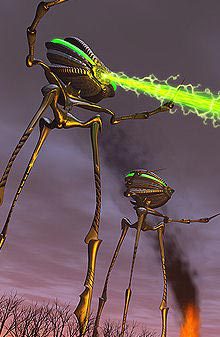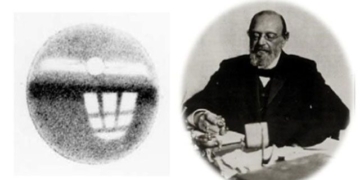 “Star Wars” is no longer just a work of fiction. Thanks to modern laser technology, the smoke, gunpowder smell, and the sharp sound of exploding ammunition will soon be replaced by beams of focused invisible light.
“Star Wars” is no longer just a work of fiction. Thanks to modern laser technology, the smoke, gunpowder smell, and the sharp sound of exploding ammunition will soon be replaced by beams of focused invisible light.
At hundreds of kilometers above the Earth, fighter jets equipped with laser weapons can easily destroy numerous ballistic missiles. Energy-controlled cannons effectively intercept missile salvos at the speed of light, heating and igniting explosives from within, rendering them useless. This is not mere science fiction from Star Wars.
The laser initiative began research over a decade ago and will soon become a reality. The U.S. military experimented with laser tactics through the Tactical High Energy Laser project to shoot down dozens of Katyusha rockets in the New Mexico desert. In 2004, the U.S. Air Force conducted initial tests of laser energy weapons.
Reality is beginning to unfold with every effort to apply lasers in combat reminiscent of Star Wars. To generate megawatts of laser energy sufficient to detonate a missile, hundreds of liters of toxic substances—ethylene and nitrogen trifluoride—are required. However, the biggest obstacle is that after several shots, the laser energy must be replenished with new reactive materials. Another difficulty lies in transporting these large quantities of toxic substances, either by air or across the battlefield, which could affect their efficacy if exposed to dust and rain. Due to many unresolved issues, last year the U.S. military canceled its Tactical High Energy Laser project.
But don’t be quick to assume that laser weapons are being abandoned. The ability to strike accurately from very long distances with this type of weapon is highly attractive to military forces, especially as U.S. troops face guerrilla fighters who are often elusive. U.S. Navy Admiral Bradley Lott stated, “Infiltrating a crowd to eliminate one or two targets without generating smoke or noise; and being able to fire for extended periods without reloading—that is the concept the U.S. Navy is particularly interested in pursuing.”
 All laser energy operates in the same manner: it excites certain types of atoms and particles of light—photons—emit. The light reflecting back to the excited atoms causes even more photons to appear. However, unlike regular light that disperses in all directions, the second wave of photons travels in a single direction, closely following the first wave. The wavelength of laser light depends on the atomic environment. Once enough concentrated light is emitted, the target begins to burn.
All laser energy operates in the same manner: it excites certain types of atoms and particles of light—photons—emit. The light reflecting back to the excited atoms causes even more photons to appear. However, unlike regular light that disperses in all directions, the second wave of photons travels in a single direction, closely following the first wave. The wavelength of laser light depends on the atomic environment. Once enough concentrated light is emitted, the target begins to burn.
The first laser experiments in the 1960s used ruby crystals as the atomic medium, but this type of solid-state laser produced only a few hundred watts of energy—sufficient for eye surgery applications. However, millions of watts are required to destroy a missile. After extensive research, military scientists discovered another type of laser called free-electron laser (FEL), which does not use toxic substances or crystals. This laser has naturally become the “star” of the U.S. Strategic Defense Initiative known as Star Wars. Two American scientists, George Neil, the program leader, and Bob Yamamoto, are very confident that this laser can intercept missiles.
However, in reality, the FEL research has not yet achieved any success, and at scientific conferences, Neil continuously tries to defend the revival of his FEL research program with the support of sponsors. Ultimately, Neil’s team succeeded in creating a “laser bullet.” Soon, this scientific team from the U.S. Department of Defense will urgently need funding to develop a laser capable of reaching 100 KW, enough to become a viable laser weapon.




















































